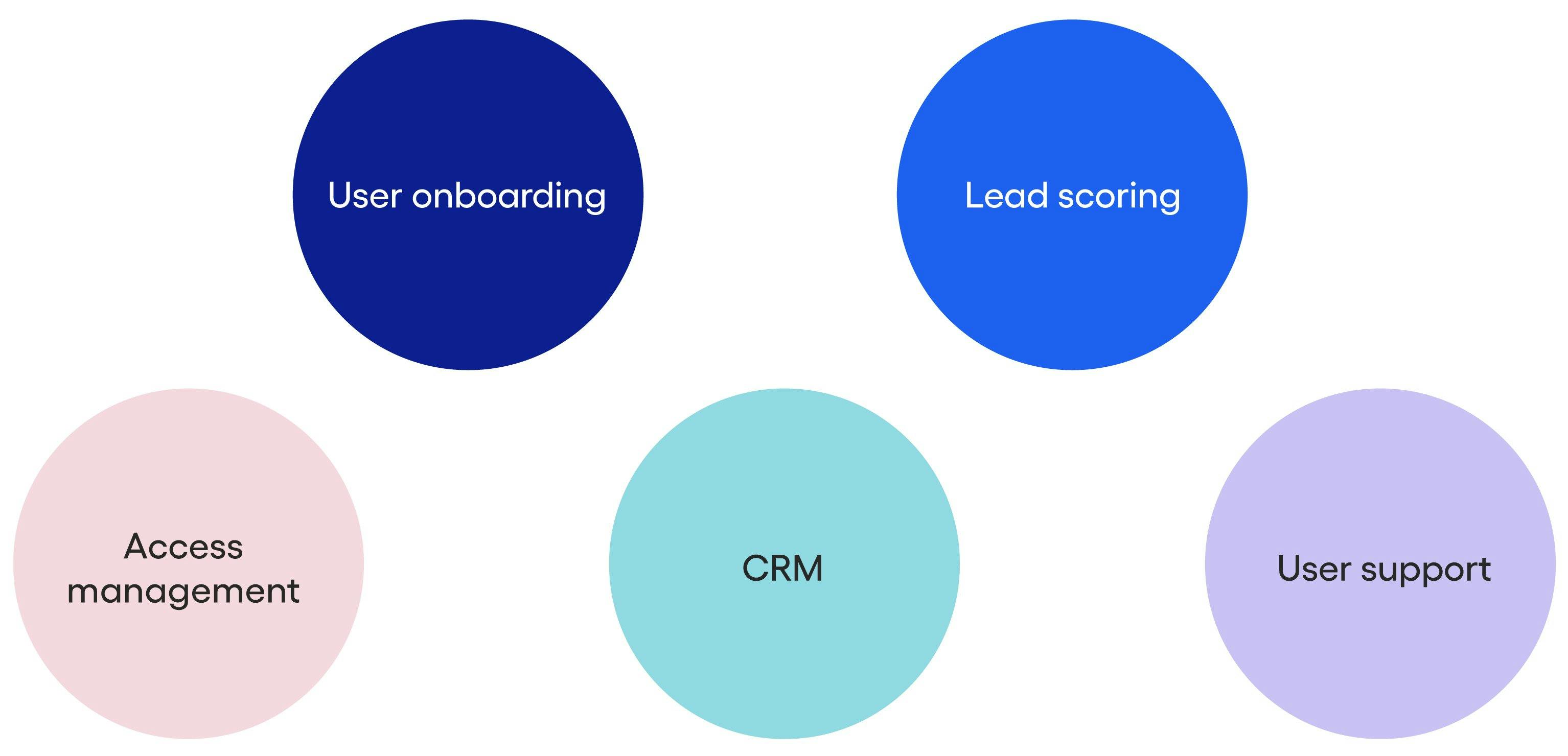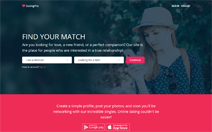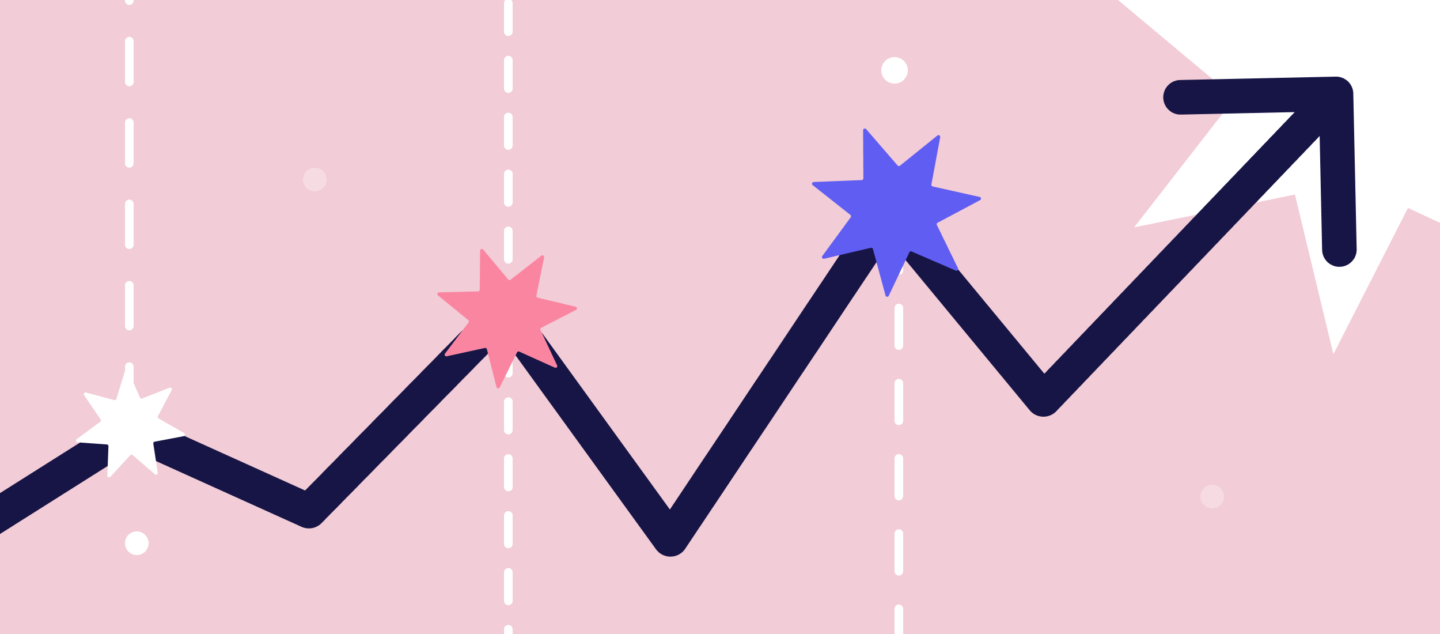What Is PLG?
Introduction: Rethinking Growth in the Modern Landscape
The era of pursuing growth at any expense has reached its limits. Businesses today are confronted with the challenge of achieving more with fewer resources. In response, an increasing number of companies are turning to a strategy that addresses this dilemma: product-led growth (PLG).
The appeal of PLG is evident, driven by its capacity to minimize customer acquisition costs (CAC) through prudent reductions in sales and marketing expenditures. This approach aligns particularly well with the current climate, where end users wield greater purchasing influence and exhibit a preference for the try-before-you-buy approach.
However, it’s important to recognize that PLG is not a one-size-fits-all solution capable of instantly resolving all growth obstacles. While it contributes to trimming sales and marketing overhead, PLG does not replace these functions but rather complements them in a coordinated sequence. Additionally, it’s imperative to acknowledge that PLG might not suit every business context; specific prerequisites must be met for its effective implementation.
In essence, PLG is intricate and nuanced. Attempting to replicate successful PLG strategies from other companies proves futile, as such strategies are intricately tied to each company’s unique customer journey and value proposition. Nonetheless, this complexity is what renders PLG appealing to a wide range of enterprises, particularly those born in the digital-first era, where the self-discovery of a product’s value by users is fundamental (consider examples like Miro and Slack).
While success stories like Miro and Slack have amplified interest in PLG, it’s essential for newcomers to the strategy to exercise patience. While PLG eventually yields a more sustainable revenue stream, its initial stages may involve a dip in average contract value (ACV). Embracing PLG requires an investment mindset, one that proves to be worthwhile in the long run.
Understanding Product-Led Growth (PLG)
Elena Verna, the former Head of Growth at Amplitude, defines growth as the ability to reliably, sustainably, and competitively address the question of how to acquire, retain, and monetize customers.
PLG represents a method to achieve this. It’s a growth strategy that harnesses the power of the product itself, rather than relying solely on marketing or sales efforts, to steer the processes of acquisition, retention, and monetization.
While there exists a broad consensus on this fundamental definition, the reality is more intricate. Franciska Dethlefsen, Amplitude’s Head of Growth Marketing, highlights that very few, if any, companies excel in all three areas of acquisition, retention, and monetization. Many companies still depend on marketing for driving user engagement and have a sales-oriented approach for monetization.
However, it’s crucial to dispel misconceptions around PLG. One such misconception is that PLG serves as a universal remedy for all growth challenges. Another misconception is viewing PLG solely as an acquisition tactic. Contrary to this, as noted by Ashley Stepien, Amplitude’s VP of Global Marketing, PLG strategies can be employed to engage and nurture users throughout their journey, leading to increased usage, loyalty, and connection. In essence, PLG’s impact transcends mere acquisition and extends its influence across the entire customer journey, facilitating growth.
The Dynamics of the Product-Led Customer Journey

The product-led customer journey involves several key phases:
- Acquisition: This occurs when potential customers transition into actual customers. In a product-led growth strategy, the product itself plays a pivotal role in enticing new users to sign up. This can be achieved through tactics like leveraging virality and user-generated content to drive sign-ups.
- Retention: Retention comes as a result of activation and engagement. Users develop a habit of using your product and continue to engage with it after their initial interaction. In a product-led approach, the product is designed to foster ongoing habit formation through triggers that encourage consistent usage.
- Activation: Activation marks the point when a user experiences a significant “aha” moment and discovers the value your product offers. In the context of product-led growth, it’s crucial to ensure a streamlined setup and onboarding process, allowing users to quickly reach that pivotal “aha” moment without requiring external intervention.
- Engagement: The engagement metric gauges how engaging and “sticky” a product is, measuring user interaction levels. In a product-led strategy, the product strives to delight users by addressing their current needs or motivating them to explore new use cases, thus enhancing engagement.
- Monetization: Monetization involves generating revenue from the value users derive from your product. This can include converting free users into paying customers. In a product-led approach, users can seamlessly make purchases without the need for sales assistance, facilitating self-serve checkout.
Ibrahim Bashir, Amplitude’s VP of Product, emphasizes the importance of placing the product at the forefront of every stage in the customer journey. This entails considering a wide range of customer touchpoints, such as offering demos, fostering forum discussions, providing comprehensive documentation, and delivering accessible help services. This approach ensures that the product remains a central focus throughout the entire customer journey.
Creating the Ideal Environment for Product-Led Growth
Cultivating the Right Culture
Even the most meticulously crafted product-led growth (PLG) strategy can falter without the right blend of culture and technology. One crucial aspect is a data-centric approach. Without a comprehensive understanding of customer interactions, driven by both qualitative and quantitative data, it’s virtually impossible to craft a user experience that stands out and drives growth independently.
Elena Verna, Amplitude’s former Head of Growth, emphasizes the importance of a data-driven environment, advocating for decisions grounded in insights rather than relying solely on intuition or the opinions of the highest-paid individuals within the organization. Behavioral data that unveils user actions across the customer journey and their psychological motivations holds greater reliability and utility. By democratizing self-serve data accessibility throughout the organization, insights become readily available, reducing the dependence on analysts tackling overwhelming request backlogs.
A culture of experimentation is equally pivotal. Experimentation forms the bedrock for informed decision-making that enhances user experiences and drives significant business impact. While intuition can yield satisfactory outcomes, it lacks the sustainability and reliability required for effective decision-making. Experimentation’s dividends are especially pronounced in the realm of growth, as highlighted by Amplitude’s Head of Product Experiment, Wil Pong.
Given that all workflows within a PLG model are tailored to impact acquisition, retention, and monetization, experimenting with these variables directly influences business outcomes. For instance, tweaking onboarding processes through experimentation can heighten product activation rates. Moreover, experimentation nurtures a “growth mindset” that continuously refines product insights, bridging the gap between perceived needs and actual customer requirements—especially crucial as an organization scales and direct customer feedback becomes more challenging to obtain.
Ultimately, PLG promotes a form of radical transparency, encouraging honesty about product successes and shortcomings. Former Amplitude Product Analytics Lead, Storm Hurwitz, underscores the significance of exposing product deficiencies. In traditional sales-driven structures, sales and customer service teams often shield product teams from such truths. PLG, however, encourages a candid assessment of when a product thrives and when it falls short.
Leveraging Appropriate Technology
Equally vital is the selection of suitable technology, particularly a modern growth stack addressing various needs:
- Access Management: The initial step in any PLG strategy involves providing prospects a way to sign up or try a product. However, requesting excessive personal information upfront can deter potential leads. Platforms like Cognito and Auth0 simplify sign-up processes by enabling users to register using their existing accounts, such as Google, GitHub, or LinkedIn.
- User Onboarding: Given the significance of first impressions, a seamless onboarding flow is indispensable. Tools like Userflow empower teams to develop customized onboarding sequences without requiring coding expertise.
- Customer Relationship Management (CRM): Nurturing users through personalized, regular communications aids in sustaining engagement and retention. An array of CRM tools, such as HubSpot and Intercom, cater to this requirement.
- Lead Scoring: Converting free users into paying customers necessitates identifying promising leads amid the noise. Tools like Sherlock evaluate user engagement, while Clearbit enriches user data to pinpoint high-intent prospects.
- User Support: Swift, accessible support significantly curtails churn. Solutions like Intercom, Zendesk, HubSpot, and ReleaseNotes excel in this arena, with some even providing feature release updates.

Additionally, a modern data stack for growth is a prerequisite. It encompasses collection, warehousing, analytics, and activation tools offering services such as:
- Collecting event data from first-party sources, including your product or website.
- Storing data within a cloud data warehouse.
- Analyzing data to comprehend user behavior and identify points of friction.
- Activating data within downstream tools to construct personalized customer experiences.
Leading digital analytics platforms like Amplitude furnish indispensable insights into the customer journey and methods for optimizing it for growth. These platforms facilitate experimentation by simplifying real-time tracking and course correction. Amplitude, centered on PLG, integrates seamlessly with other tools like CRMs, aiding in data activation.
Building the Right Team for Product-Led Growth
Essential Skills and Proficiencies
Given the intricate nature of product-led growth (PLG) and its wide-ranging applicability throughout the user journey, the requisite skill set is understandably diverse and multifaceted. The skills demanded encompass a grasp of digital interfaces, consumer psychology, content creation, customer modeling, and, perhaps most crucially, data analysis. According to former Amplitude Product Coach and Evangelist, John Cutler, the reliance on quantitative data becomes paramount due to limited direct customer interactions: “In many cases, you don’t have firsthand interactions with the customer, so you can’t use qualitative data.”
Equally significant is the ability to design and execute experiments, a capability that demands investments in analytics and research. When executed effectively, experimentation yields significant dividends. Storm Hurwitz, now the Director of Product Analytics for Commerce and Growth at Peacock, underscores the importance of testing and validating hypotheses about user motivations, highlighting that teams adopting this approach often devise the most innovative strategies for leveraging their product as a substantial growth driver for their organizations.
Broadly speaking, PLG mandates a comprehensive perspective on growth, as articulated by Cutler—the need for an “end-to-end, full systems” view. Ashley Stepien underscores this perspective, emphasizing the cultivation of a constant curiosity regarding all growth levers and potential enhancements.
This holistic outlook is indispensable for every facet of an organization. In the realm of sales, for instance, it involves mastering the art of selling based on a customer’s usage patterns, analyzing their current product utilization, and identifying additional use cases that could benefit them in the future. This intricate interplay between customer behavior and product potential necessitates a skilled and adaptable team.
Structuring Your Organization for Product-Led Growth
Collaboration and Continual Learning
A successful PLG team thrives on collaboration and a culture of perpetual learning. Cross-functional expertise is paramount, as different team members contribute diverse perspectives derived from their respective domains. A cohesive alignment among product, marketing, sales, and customer support is vital to address the full spectrum of user needs and optimize growth levers.
Moreover, the ever-evolving landscape of digital interfaces and user preferences demands ongoing education and skill refinement. Team members must remain attuned to industry trends, technology advancements, and shifting consumer behaviors. The ability to swiftly adapt and incorporate new insights is central to maintaining a competitive edge and effectively driving PLG initiatives.
In essence, assembling a team equipped with a diverse skill set, a penchant for experimentation, and a collaborative ethos lays the foundation for effectively navigating the complexities of PLG. By fostering a culture of curiosity, continual learning, and cross-functional collaboration, organizations can leverage PLG to propel their growth strategies to new heights.
Exploring Organizational Models
Determining how to structure teams around product-led growth (PLG) and where PLG should reside within the organizational framework can be approached from several angles.
Product-Centric Approach
In the prevalent model, the growth team is nested within the product team. This arrangement ensures that team members report to managers possessing similar expertise—designers report to designers, engineers to engineers. This alignment not only fosters cohesion but also underscores the centrality of PLG in the product team’s strategy. Augmenting this structure with growth product managers enables teams to concentrate on delivering not only an exceptional user experience but also one that propels growth.

Growth-Oriented Departure
Alternatively, growth can be established as an autonomous department. A Vice President (VP) of Growth would oversee a multifaceted team encompassing growth marketing, product growth, and potentially analytics. This collective unit assumes the responsibility for self-serve revenue. This model guarantees alignment among team members sharing the same goals and metrics—successful instances like Postman and Snyk attest to its viability. However, a potential drawback is that reporting lines might not be as straightforward as in other models.

Dual Collaboration Framework
A distinct model, employed at Amplitude, involves multiple teams jointly overseeing growth efforts across marketing and product domains. In this scenario, both teams report to their respective leaders—the VP of Marketing and the VP of Product. This arrangement ensures clarity in reporting lines. While collaboration can present challenges, the convergence of shared product metrics reinforces alignment. At Amplitude, for instance, teams collaborate on common metrics spanning acquisition, retention, and monetization, collectively advancing these metrics. This dual approach harnesses the strengths of both domains while encouraging concerted progress.

The choice of organizational model hinges on the unique context of each company. The product-centric approach capitalizes on alignment within the product team, the growth-oriented structure empowers a dedicated growth-focused unit, and the dual collaboration framework seeks harmony between marketing and product efforts.
Ultimately, the chosen model should reflect the organization’s goals, culture, and strengths, ensuring that the PLG strategy is seamlessly integrated into the fabric of the company’s operations.
Implementing Product-Led Growth: A Strategic Approach
Once your PLG team structure is in place, the journey towards embracing a product-led approach requires a shift in perspective and operational strategies. As emphasized by former Amplitude VP of Global Sales Development, John Black, this entails reimagining how your organization operates and gauges success. Recognizing that PLG motions differ significantly from traditional human-led sales cycles, Black underscores the need for a fundamental transformation in approach.
Sales Strategy Transformation
Adopting PLG necessitates a comprehensive reevaluation of your sales strategy. Transitioning from a conventional “top-down” sales motion that focuses on closing large enterprise deals, PLG entails a more prolonged strategy of nurturing accounts for gradual growth. The practical manifestation of this shift involves an approach known as “land and expand.” This strategy involves securing a greater number of customers through affordable entry-level or trial plans, which can be upgraded as customers utilize the product. Elena Verna, former Amplitude executive, characterizes PLG as an expansion-centric endeavor—growing alongside customers and their usage.
A key facet of PLG is its focus on volume. Lower-cost entry plans facilitate rapid customer base expansion, generating an active and loyal user pipeline. By prioritizing the most promising users from this pool, sales can convert them into expansion opportunities or larger enterprise deals. This facet of PLG also allows sales teams to cultivate product evangelists, pivotal in expanding into enterprise-scale solutions.
Educational and Training Imperative
Driving internal alignment and facilitating the transition to PLG requires comprehensive education and training for sales teams. A pivotal revelation is that PLG does not diminish sales teams’ revenue. Instead, it opens avenues to previously untapped market segments. According to Ashley Stepien, positioning PLG as a means to enhance sales pipeline quality, customer maturity, and overall awareness is crucial to securing internal buy-in. Ibrahim Bashir highlights the importance of framing PLG as an enabler of efficiency for various go-to-market (GTM) teams.
Although sales organizations might approach PLG with reservations, multiple reasons exist for them to endorse this strategy. The evolution of customer buying behaviors plays a significant role; contemporary customers wield more purchasing power and prefer trial-based experiences over lengthy sales interactions. While the average contract value may decrease, this shift translates into a multitude of opportunities, including engagement with users previously deemed too small for sales efforts.
Unlocking Promising Prospects
A remarkable benefit of PLG is the revelation of product signals that identify the most promising prospects—what Stepien terms “the most qualified leads.” Research by OpenView indicates that product-qualified leads convert at five times the overall conversion rate. PLG enables the cost-effective revelation of customer engagement patterns, driving efficiencies in lead generation and activation processes.
Scaling with Sales-Led Growth
For organizations already on a product-led trajectory but seeking to incorporate sales to facilitate scaling, a strategic shift towards the upper market tier is advised. Collaborating with sales teams to identify leverage points becomes paramount. Consider the following steps:
- Engage with product champions who have expressed positive experiences, enlisting them to advocate for your product within their organizations.
- Identify complex use cases within your existing customer base that could serve as expansion opportunities. Offer these customers upgrades to access premium features, thereby unlocking additional value.

Incorporating sales into a product-led growth framework necessitates strategic alignment and collaboration, enabling businesses to tap into new growth avenues while fostering customer-centric expansion.
Customer Success
Aaron Bird, Co-Founder and CEO of Inflection.io, a platform focused on PLG-oriented marketing and communication, highlights the importance of equipping customer success teams with the appropriate capabilities to support the surge of users attracted by low-cost or free entry options. Bird underscores the need for adjusting existing processes to accommodate such a shift, as the standard customer setup, activation, and support mechanisms might not be suited for the altered landscape. This adaptation often involves implementing one-to-many communication systems for account managers or customer success representatives. These teams might need to take on additional responsibilities, functioning not only as support agents but also as onboarding experts and even sales representatives.
Role of Marketing
In a PLG framework, marketing occupies a pivotal role alongside sales and customer success. Marketers are instrumental in identifying new user personas to drive acquisition and elevate retention and monetization rates. Their contribution involves generating diverse content that spans the entire customer lifecycle. This content encompasses various forms, including emails that focus on onboarding, usage changes, and product updates, as well as newsletters aimed at fostering user relationships. Elena Verna emphasizes that in the context of PLG, the amplification of marketing efforts becomes indispensable for success.
When PLG Might Not Be Suitable
Despite its potency as a strategy, adopting PLG prematurely can lead to adverse outcomes. Elena Verna outlines indicators that suggest an organization may need to address certain prerequisites before embracing PLG:
- Unpredictable Sales and Marketing Motions: If an organization’s current sales and marketing strategies lack predictability and sustainability, PLG might not be the right fit. Addressing the gap between perceived user preferences and actual user behavior is crucial. Establishing clear user interactions, market alignment, and internal support mechanisms are foundational steps before venturing into PLG experimentation.

- Inability for Self-Activation: Successful PLG hinges on users being able to experience the product’s value without requiring intervention. If users heavily depend on sales or customer support for activation, the organization is not yet ready for PLG. Simplistic platforms facilitate self-activation, whereas complex tools necessitate human guidance for connecting to backend systems.

- Value Not Immediately Apparent: For PLG to thrive, users must promptly recognize the product’s value independently. However, some products face greater challenges in this regard. For instance, passive products like cybersecurity software might not offer recurring engagement opportunities, undermining the potential for PLG-driven retention and monetization.

- Enterprise Buyers Retain Decision Power: In highly regulated industries, such as healthcare and government, where decision-making power remains concentrated in enterprise buyers rather than end-users, PLG might encounter obstacles. PLG thrives when end-users discover and champion a product’s value, subsequently influencing the broader organization’s adoption. Adaptations, such as introducing freemium models and gradually expanding towards enterprise solutions, might be necessary in such contexts.

Assessing PLG Maturity
Evaluating an organization’s PLG maturity involves gauging the fulfillment of certain parameters:
- Growth: While PLG doesn’t necessitate an immediate shift for every stage of the customer journey, it requires enabling users to experience the product’s value independently. Self-serve activation and retention form the core of PLG’s efficacy.
- Culture: A data-grounded understanding of the customer journey, internal alignment across functions, frequent experimentation, and a willingness to test new strategies are indicative of a culture ready for PLG.
- Infrastructure: Possessing the appropriate tools to visualize customer journeys, insights for acquisition, retention, and monetization optimization, and integration capabilities contributes to successful PLG implementation.
Adopting PLG doesn’t mandate peak maturity from the outset. Similar considerations apply to the maturity of sales or marketing-led approaches. The diversity of PLG approaches enables organizations to find the most suitable fit for their circumstances.
Embarking on Your PLG Journey
While the PLG landscape offers various forms, a universal truth underpins success: comprehending the customer journey. By leveraging analytics, organizations can address pivotal questions such as acquisition channel performance, onboarding friction points, “aha” moments, user drop-offs, recurring feature-driven engagement, and the journey from free to paid conversion. Armed with these insights, organizations can develop products that resonate with users, driving sustainable growth. Amplitude’s free plan stands as a valuable resource, providing tools to chart customer behavior and guide businesses on their PLG journey.
The compilation of this guide is the result of in-depth interviews with a panel of industry experts. We extend our heartfelt gratitude to the individuals who generously shared their insights and expertise during these interviews. A special thank you to the following interviewees for their invaluable contributions:
- Aaron Bird
- Abbie Kouzmanoff
- Alec Kriebel
- Alex Simmons
- Andrea Wang
- Asavari Tayal
- Ashley Stepien
- Brian Abad
- Carmen DeCouto
- Dave Bonlander
- Elena Verna
- Franciska Dethlefsen
- Hien Phan
- Hiral Shah
- Ibrahim Bashir
- John Black
- John Cutler
- Kayli Berlin
- Rachel Herrera
- Rob Bow
- Storm Hurwitz
- Trevor Hadley
- Wil Pong
- Will Newton
Your contributions have enriched this guide and provided valuable insights for businesses navigating the realm of Product-Led Growth. Thank you for your dedication and expertise.





